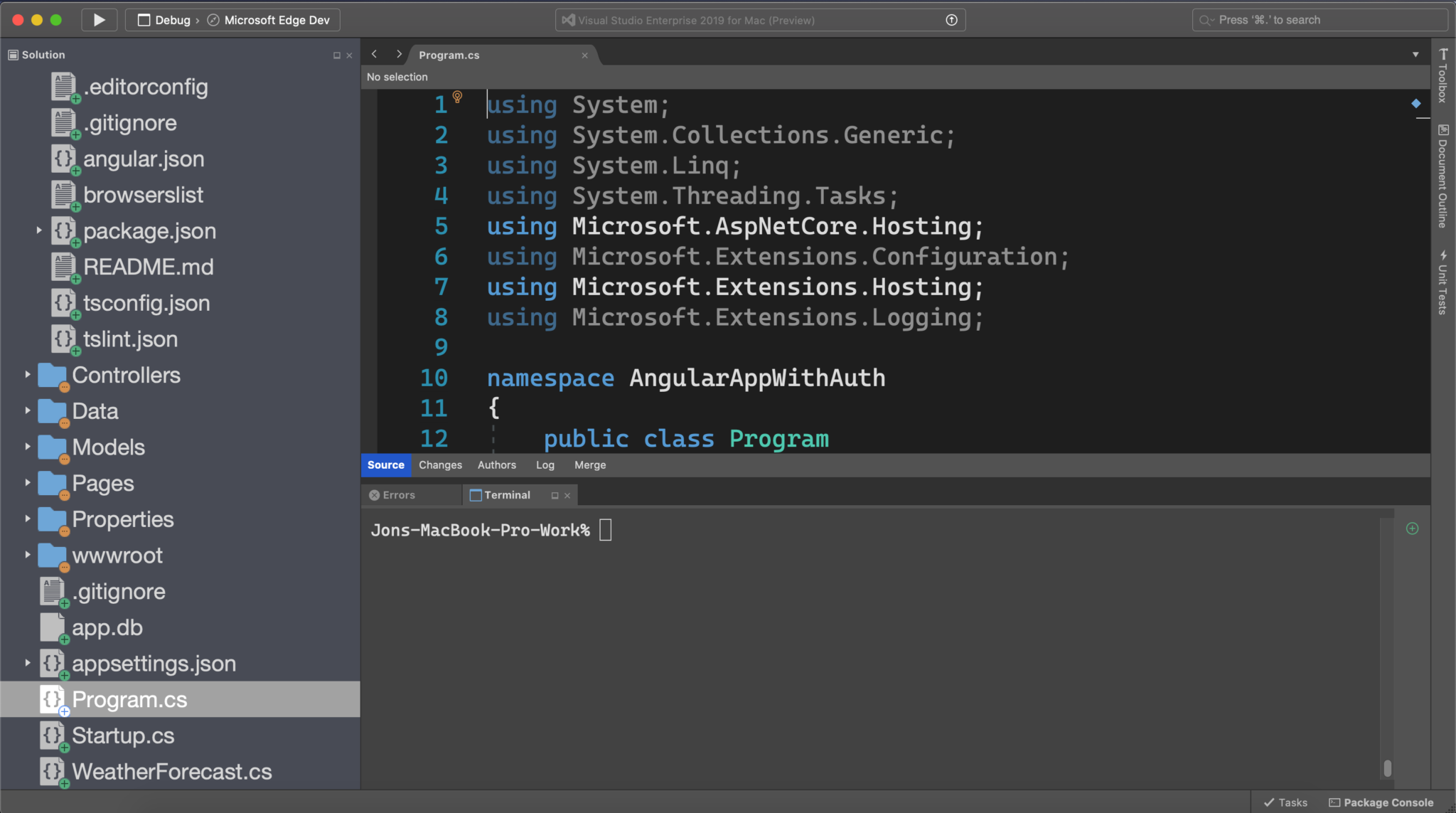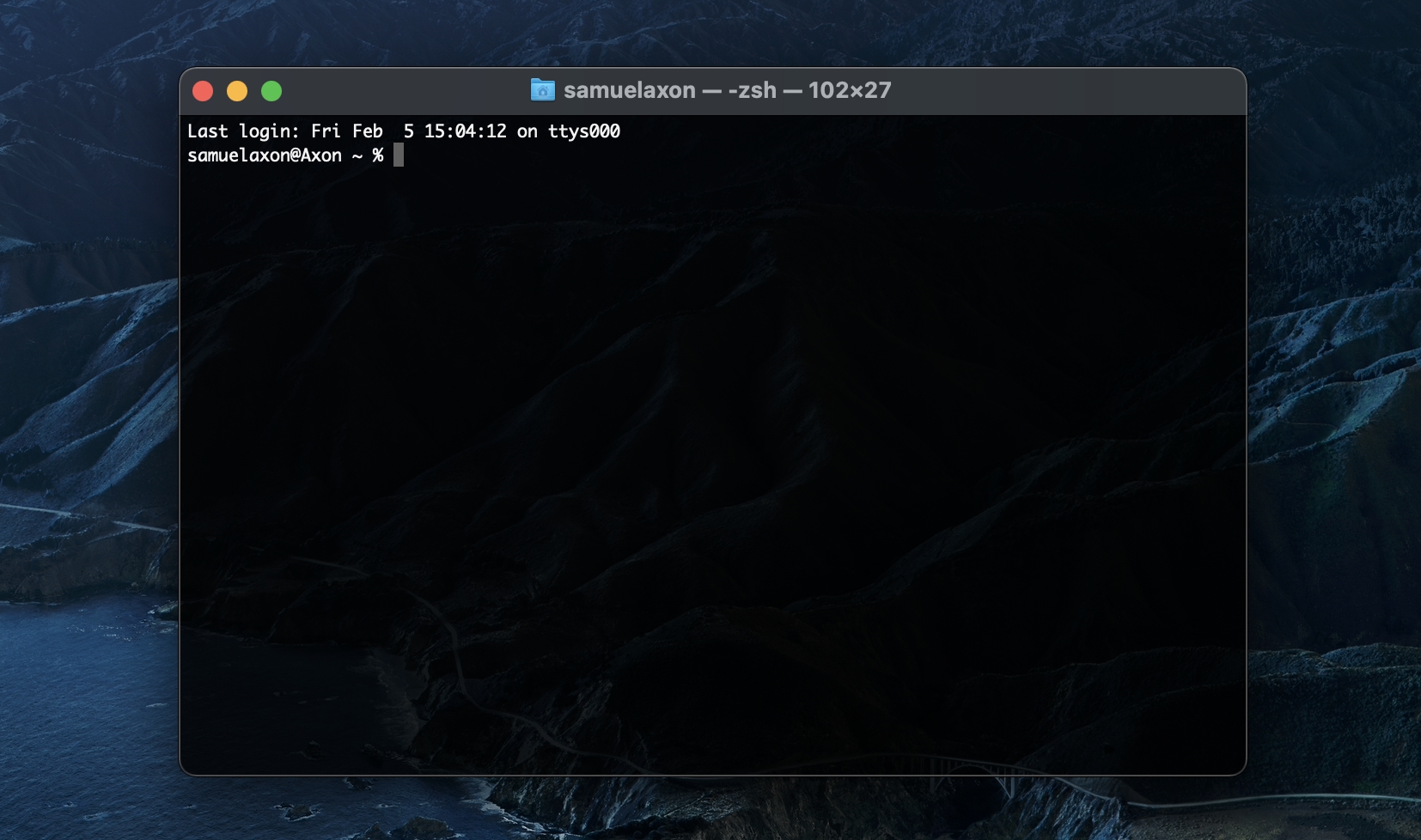- Install Os X From Terminal
- Mac Terminal Download From Url
- Terminal Mac Download
- Mac Os Terminal App
- Terminal Mac Download
OpenTerminal for Mac, free and safe download. OpenTerminal latest version: Opens the Terminal with the cd command. Download Mac Terminal For Windows. List and Install macOS Updates From the Terminal Open the Terminal, which you can find using the Finder by heading to Applications Utilities. Next, type softwareupdate -l at the prompt and hit Return. This command lists all available updates on your system. Downloading and installing all available updates is.
Add support for the 'screen' terminal's way of setting the window title. Support SGR (1006) mouse reporting. Allow OSC 4 to set color of first 16 palette entries. Add support for OSC 52 (clipboard integration-thanks, saitoha!). Add support for DECSCUSR which lets the terminal. HyperTerminal by Hilgraeve, Inc. Is a terminal emulator that gives you the possibility to connect to various systems using TCP/IP Networks, Dial-Up Modems and COM ports. Even though HyperTerminal for Mac is not yet on the market, there are other applications that can help you do the job. ITerm2 is a free and open source terminal emulator that offers users a robust search tool. Mac terminal free download. Alacritty Alacritty is the fastest open source terminal emulator there is. How is it the fastest? Downloads; What is iTerm2? ITerm2 is a replacement for Terminal and the successor to iTerm. It works on Macs with macOS 10.12 or newer. ITerm2 brings the terminal into the modern age with features you never knew you always wanted. Why Do I Want It? Check out the impressive features and screenshots. If you spend a lot of time in a terminal, then.
Master Mac/Linux Terminal Command Shortcuts Download. In the cause of this tutorial, you will learn mac terminal commands, get link access to mac terminal commands pdf, know the full list files in directory mac terminal. In addition, we will know how to open a directory in terminal mac, change directory mac terminal, download terminal for mac. Mac as a Unix based system has a lot of resources to accomplish a lot of tasks from the terminal. How to download a file in a Mac from the terminal The best tool you can use with a Mac to download a file is curl, so first go to the folder you want to download the file to and issue this command. Wget is a robust command line application for downloading URL-specified resources. It was designed to work excellently even when connections are poor. Its unique feature, compared to curl which ships with macOS, for example, is that it is non-interactive so it can run in the background.
These advanced steps are primarily for system administrators and others who are familiar with the command line. You don't need a bootable installer to upgrade macOS or reinstall macOS, but it can be useful when you want to install on multiple computers without downloading the installer each time.
Download macOS
Find the appropriate download link in the upgrade instructions for each macOS version:
macOS Catalina, macOS Mojave, ormacOS High Sierra
Installers for each of these macOS versions download directly to your Applications folder as an app named Install macOS Catalina, Install macOS Mojave, or Install macOS High Sierra. If the installer opens after downloading, quit it without continuing installation. Important: To get the correct installer, download from a Mac that is using macOS Sierra 10.12.5 or later, or El Capitan 10.11.6. Enterprise administrators, please download from Apple, not a locally hosted software-update server.
OS X El Capitan
El Capitan downloads as a disk image. On a Mac that is compatible with El Capitan, open the disk image and run the installer within, named InstallMacOSX.pkg. It installs an app named Install OS X El Capitan into your Applications folder. You will create the bootable installer from this app, not from the disk image or .pkg installer.
Use the 'createinstallmedia' command in Terminal
- Connect the USB flash drive or other volume that you're using for the bootable installer. Make sure that it has at least 12GB of available storage and is formatted as Mac OS Extended.
- Open Terminal, which is in the Utilities folder of your Applications folder.
- Type or paste one of the following commands in Terminal. These assume that the installer is still in your Applications folder, and MyVolume is the name of the USB flash drive or other volume you're using. If it has a different name, replace
MyVolumein these commands with the name of your volume.
Catalina:*
Mojave:*
High Sierra:*
El Capitan: - Press Return after typing the command.
- When prompted, type your administrator password and press Return again. Terminal doesn't show any characters as you type your password.
- When prompted, type
Yto confirm that you want to erase the volume, then press Return. Terminal shows the progress as the bootable installer is created. - When Terminal says that it's done, the volume will have the same name as the installer you downloaded, such as Install macOS Catalina. You can now quit Terminal and eject the volume.
* If your Mac is using macOS Sierra or earlier, include the --applicationpath argument, similar to the way this argument is used in the command for El Capitan.
Use the bootable installer
After creating the bootable installer, follow these steps to use it:
- Plug the bootable installer into a compatible Mac.
- Use Startup Manager or Startup Disk preferences to select the bootable installer as the startup disk, then start up from it. Your Mac will start up to macOS Recovery.
Learn about selecting a startup disk, including what to do if your Mac doesn't start up from it. - Choose your language, if prompted.
- A bootable installer doesn't download macOS from the Internet, but it does require the Internet to get information specific to your Mac model, such as firmware updates. If you need to connect to a Wi-Fi network, use the Wi-Fi menu in the menu bar.
- Select Install macOS (or Install OS X) from the Utilities window, then click Continue and follow the onscreen instructions.
Learn more
For more information about the createinstallmedia command and the arguments that you can use with it, make sure that the macOS installer is in your Applications folder, then enter this path in Terminal:
Catalina:
Mojave:
High Sierra:
El Capitan:
I am spending a lot of time on the command line for the daily development work. I decided to install iTerm2 terminal as an alternative terminal for Mac OS because the default terminal app does not offer rich and powerful features to make my development life easier. So I decided to install advanced alternative terminal to replace Mac OS default terminal.
Before you install iTerm2, please refer its features on their website.
If you happy it’s features and power, you can download the iTerm2 from the following link. Alternatively, you can use Homebrew package manager to install this package.
Install iTerm2 terminal
After download iTerm2 installation file, simply drag and drop into the Applications folder to install iterm2 terminal app. Now you can launch iTerm, through the Launchpad for verifying the installation.
Alternatively, you can install iTerms2 via Homebrew package manager. Once you install the package using Homebrew, you will be able to launch iTerm2 via Mac Launchpad.
When you open iTerm2, it’s looks and feel not that pretty impressed by the first look. You need to follow few more steps to get the look you preferred. You can completely change its looks and feel by customizing default features.
Let’s just quickly change some preferences.
Remove computer name and username from the terminal’s bash prompt
Open iTerms2 “Preferences” configurations box. Then click on “Profiles” tab and select “General” tab.
iTerm2 -> Preferences ->Profiles -> General
Add following text under “Send text at start:” text input.
Close the “Preferences” box and reopen iTerm2 terminal and you will be able to see bash prompt without the computer name and username.
Change default colour theme and fonts
You can download more colour themes to install iterm2 terminal from this web site. http://iterm2colorschemes.com/
Download the zip file and unzip it for the preparation of the next step. Now open the “Preferences” settings window.
You can create a different profile other than Default if you wish to do so. I created a new profile for adding custom settings to the iTerm2.
Open iTerms2 “Preferences” configurations box. Then click on “Profiles” tab and select “Colours” tab.
iTerm2 -> Preferences ->Profiles -> Colours
Now click on “Colour Preset” drop-down and click on “Import” option. Navigate to the “schemes” folder previously unzipped colour profile folder. Then select your preferred colour themes and selected colour themes will be added to the “Colour Preset” drop-down after installing.
Now reopen iTerms terminal and see the effect of the new colour theme.
Once I customize iTerm2 colour theme still I did not see expected nicer interface. I decided to install Oh-My-Zsh to add more features.
Before install Oh-My-Zsh, you need to remove the previously modified text input in the iTerm2 preferences.
Because of Oh-My-Zsh, follow the different approach to remove the user@your_machine name from your bash prompt.
Oh-My-Zsh is an open source, the community-driven framework for managing your ZSH configuration. It comes bundled with a ton of helpful functions, helpers, plugins, themes,
Download Bloomberg Terminal For Mac
Install Oh-My-Zsh
It’s a good idea to backup your existing ~/.zshrc file before installing Oh-My-Zsh.
Now you can use the following command on your terminal to install Oh-My-Zsh. You will be able to find more details on their website.
Now you almost have better terminal compared to default one. I decided to use “Agnoster” theme with the Oh-My-Zsh.
Install Os X From Terminal
You can find many available themes for Oh-My-Zsh here. Before you enable “Agnoster” theme, you need to install Powerline fonts.
After installation completed edit ~/.zshrc and set ZSH_THEME=”agnoster”
After enabling “Agnoster” theme, you may be able to see broken fonts on the iTerm2, follow this GIT issue for fixing this fonts issue.
Users need to set both the Regular font and the Non-ASCII Font in “iTerm > Preferences > Profiles > Text” to use a patched font.

Now you may need to remove user@your_machine name from your bash prompt. Add following lines to your “.zshrc” configuration file and restart your iTerm2 terminal.
After you done all the above customizations, you can find your iTerm2terminall as following.

How to enable packages on Oh-My-Zsh
Oh-My-Zsh by default comes with lots of plugins to take advantage of. You can take a look in the plugins directory to see what’s currently available.
Once you spot a plugin (or several) that you’d like to use with Oh-My-Zsh, you’ll need to enable them in the .zshrc file.
Download Terminal For Mac Free
I have enabled following plugins in my configuration file.
Mac Terminal Download From Url
How to upgrade Oh-My-Zsh
If you need to upgrade you just run following command on your terminal.
How to uninstall iTerm2 terminal
Uninstalling Oh My Zsh
If you decided to uninstall iTerm2, first remove the Oh-My-Zsh theme. This will revert back your original zsh configurations.

Mac Open Terminal Shortcut
If you want to uninstall oh-my-zsh, just run uninstall_oh_my_zsh from the command-line. It will remove itself and revert your previous bash or zsh configuration.
Uninstall iTerm2

If you install iTerm2 terminal vis Homebrew package manager, just type the following command on your terminal.
Terminal Mac Download
Bloomberg Terminal Download For Mac
If you download installer file from directly from their website, you just need to trash it from “Application” folder.
Best Terminal For Mac
Mac Os Terminal App
I hope you will enjoy the features of iTerm2 terminal and Oh-My-Zsh. Please comment your thoughts below.